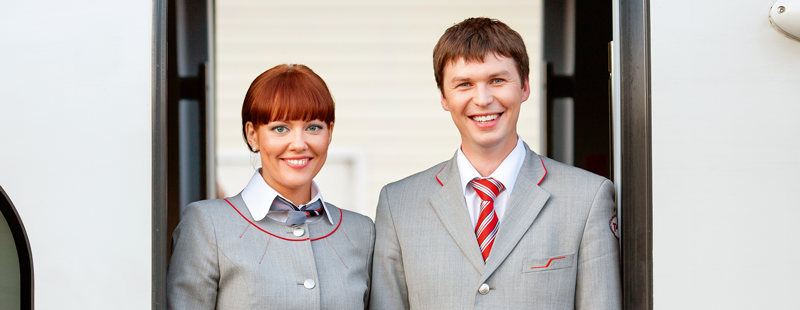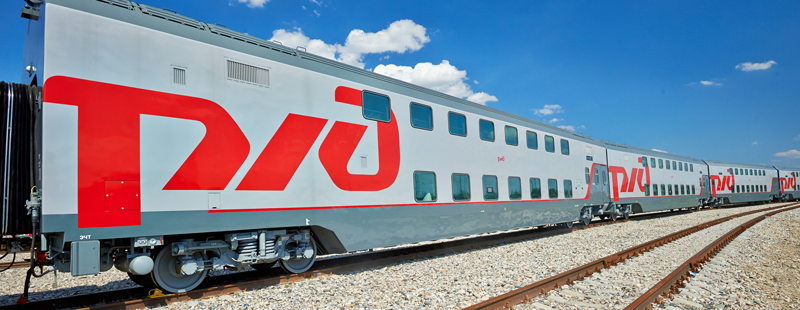Service functions
Long-distance passenger transportation

Federal Passenger Company key performance indicators
Despite a decrease in Federal Passenger Company’s performance indicators, the Company’s net profit in 2013 amounted to RUB 4.1 billion, 70.7% more than in 2012.
Net profit margin increased from 1.1% in 2012 to 1.9% in 2013 by 0.9 percentage points.
Investments amounted to RUB 27.5 billion, 25.2% more than last year. Over 87.5% of the total programme is allocated for the acquisition of rolling stock – RUB 24.1 billion (by 53.6% more than in 2012).
The following companies provide long-distance passenger transportation:
- JSC Federal Passenger Company – a subsidiary of Russian Railways. Its share in passenger traffic amounts to 97%;
- OJSCo Passenger Company Sakhalin. Provides transportation in the Sakhalin region. Its share in passenger traffic is 0.2%;
- Independent carriers: CJSC TC Grand Service Express, LLC Tverskoy Express, CJSC TransClassService. Their share in passenger traffic is 0.9%;
- Directorate of speed transport – a subsidiary of Russian Railways. Its share in passenger traffic is 1.9%.
Measures to improve the quality of long-distance passenger transportation taken by Federal Passenger Company
Optimisation of the route network and development of multimodal transportation will allow increased speed of long-distance passenger trains; optimisation of the schedule, and increased efficiency of the operational rolling stock fleet.
There was also an increase in tariff policy flexibility. In order to attract additional passenger flow and increase revenue, a number of marketing campaigns were introduced by Federal Passenger Company with regards to the compartment transportations of selected domestic trains in 2013. These campaigns covered about 10% of the non-regulated transport segment.
The effect of implementing special tariff plans and discounts in 2013 was about RUB 243 million of revenue and over 166 thousand passengers.
Double-decker transportations

Advantages of innovative new transportations:
- Convenient timetable and minimum travel time for more passengers;
- Speed of the train increased to 160 km/hour;
- Capacity of a compartment transportation is increased by 78% (to 64 seats); and of a first-class transportation by 67% (to 30 seats);
- Potential to reduce the cost of travel in compartment and first-class transportations by increasing the number of seats;
- More environmentally friendly (the cars are constructed using new technology, equipment and materials).
Overall effect of the project:
- A 38% reduction in operating expenses per passenger-seat;
- A 40% reduction in life cycle unit cost per passenger-seat;
- A 32% reduction in energy consumption per passenger-seat;
- A 33% increase in train conductors’ productivity;
- A 41% decrease in the payback period.